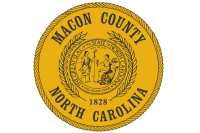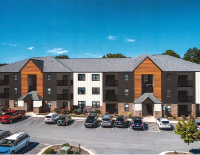Musical tiers: Counties receive 2015 economic designations
 Each year an economic report card issued by the North Carolina Department of Commerce determines which counties will be given first dibs on state grant money — and each year no one seems satisfied with their grades.
Each year an economic report card issued by the North Carolina Department of Commerce determines which counties will be given first dibs on state grant money — and each year no one seems satisfied with their grades.
Haywood’s status improved, for instance, but Economic Development Director Mark Clasby wasn’t rejoicing.
“It makes my job more difficult when trying to get grants for various projects,” said Clasby. “There’s a number of us around the state in similar situations, but in our case the second home market drives up the (property) values.”
Each county receives a tier raking of 1, 2 or 3, with tier 1 being the least prosperous and tier 3 being the most prosperous. Haywood County was upgraded from a tier 2 in 2014 to a tier 3 in 2015 while Macon County dropped from a tier 2 to a tier 1. Jackson and Swain counties kept their tier 1 designation.
The Department of Commerce looks at several factors when making these determinations — average unemployment rate, median household income, percentage growth in population and adjusted property tax base per capita. But economic development leaders agree that the formula has its flaws.
Related Items
Haywood County
Haywood is once again included in the top 20 most economically prosperous counties in the state. In 2014, Haywood ranked No. 72 out of 100 counties, but this year it has moved to No. 80. According to a letter sent to the county from Secretary of Commerce Sharon Decker, the jump is based largely on a much-improved population growth ranking (No. 47 in 2014 to No. 61 in the 2015).
In the past, Haywood has had some success getting large grants from the North Carolina Rural Center and Golden LEAF Foundation for things like water and sewer infrastructure and other economic development projects. It will be less likely for Haywood to receive that kind of funding as a tier 3 county.
Clasby said he would like to get a modification made to the formula during the next General Assembly. He said counties that have a lower unemployment rate than the state average should be a tier 2 and counties with a higher unemployment rate than the state average should be considered a tier 1.
Macon County
Tommy Jenkins, economic development director for Macon County, said there were a couple of big factors that resulted in Macon being bumped from tier 2 to tier 1 — a population of 35,000 and a higher poverty level per capita.
“Our county automatically qualifies as tier 1 under two benchmarks — our population is less than 50,000, which always been the case, but what kicked us into tier 1 this year was our poverty rate went from 18.3 to 19.6,” he said. “But if you look at other benchmarks, we’ve actually improved quiet a bit. We’re in the top third of least economically stressed counties so we had some good news and bad news.”
The other good news is Macon County will have an opportunity to go after infrastructure, sewer and water and Main Street program money, but Jenkins said there aren’t any concrete plans.
In the meantime, he said the county would continue to concentrate on its strengths in technology, a small but solid manufacturing base and tourism.
“Tourism continues to be strong for us and I feel like our central location continues to help us,” he said.

Jackson County
Rich Price, Jackson County’s economic development director, said they were doing well in many of the categories despite being classified as a tier 1 county for the third year in a row.
“When you look at the comparative statistics the state uses, we rank fairly well and high in the categories but because we fall below the 50,000 population threshold, they begin to look at our poverty rate, which averages 19.5 percent,” he said. “We don’t believe that reflects an accurate picture because they include students at Western (Carolina University).”
The state uses census data and the census counts students who live off campus as residents. Price said large portions of those off-campus students are not employed or only employed part-time, which drives up the unemployment and poverty rates for Jackson.
He said the state average population of 20- to 24-year-olds is 5.3 percent but Jackson’s is much higher because of the university.
“We’re at 12.4 percent, and I feel confident that those numbers do skew the poverty rate,” he said. “It’s hard to characterize it as good or bad, but it positions us to be eligible for state and private funding agencies looking to work with lower tier counties.”
Price has worked as Jackson County’s economic development director for a little over a year. He said that year has been spent trying to re-establish the building blocks of economic development, but he hopes in the next year he can concentrate on taking advantage of the funding available to tier 1 counties to help existing businesses and attract new ones.
Swain County
Swain County has become accustomed to being a tier 1 county because of the county’s geographic landscape. With so much of the county included in the Great Smoky Mountains National Park and a population of about 14,000, the county is limited when it comes to industry and trying to grow a property tax base.
Ken Mills, Swain County’s economic development director, said he wanted to get away from the “poor us” attitude when he took the job and to make the county self-sustaining without more state assistance.
“But I wasn’t right because we have such a small land property tax base, we can’t be self-sustaining,” Mills said. “I came to the conclusion that it is a compromise.”
While continuing to make strides to become more self-sustaining, Mills said the county also should utilize any monetary incentives available that will hopefully take the county to the next level of sustainability.
It may not be a prestigious designation, but Mills said being tier 1 has helped the county receive much-needed assistance from funding for juvenile crime prevention programs to funding for a law enforcement center.
Factors used to determine tier status
Adjusted property tax base per capita
Haywood $121,541
Jackson $240,463
Macon $236,448
Swain $105,213
Population growth 2010-13
Haywood 1.41 percent
Jackson 1.15 percent
Macon 0.66 percent
Swain 4.24 percent
Median household income
Haywood $40,022
Jackson $37,049
Macon $36,438
Swain $36,280
Unemployment (12 month average)
Haywood 5.57 percent
Jackson 5.88 percent
Macon 7 percent
Swain 8.76 percent
Source: North Carolina Department of Commerce. For more information, visit www.nccommerce.com.









